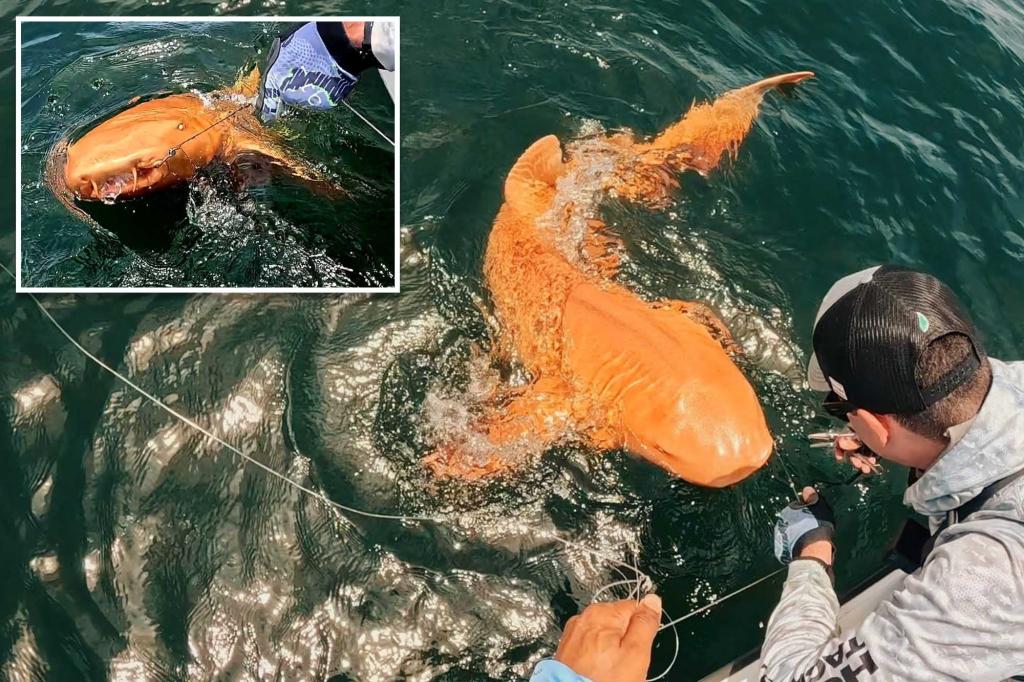The Discovery of an Orange Shark: A Rare Genetic Marvel
Scientists recently made a groundbreaking discovery in the waters of Costa Rica’s Tortuguero National Park—a vibrant orange nurse shark that has captivated marine biologists worldwide. In August 2024, researchers encountered this stunning creature during a routine fishing expedition and quickly documented the find before releasing it back into the wild. According to a report published in the Marine Biodiversity journal, this marks the first and only recorded instance of an orange shark, making it a truly exceptional scientific discovery. The shark’s creamsicle-colored appearance challenges our typical perception of these ocean predators, resembling more of an oversized koi fish than the feared hunters of the deep we’ve come to know.
The unusual coloration of this nurse shark stems from not one but two exceedingly rare genetic conditions working in tandem. The first condition, xanthism, causes a loss of darker pigmentation while enhancing lighter colors like yellows and oranges. When combined with albinism—the second condition affecting the shark—which reduces melanin production throughout the body, the result is the striking orange hue that makes this shark so remarkable. Perhaps most telling of its albino characteristics are the shark’s pasty white eyes with “no visible irises,” as noted by the scientists who examined it. This unique genetic combination creates a living canvas that stands in stark contrast to the typical light brown coloration of nurse sharks, which normally helps them blend seamlessly with their surroundings.
Scientists have suggested that beyond these primary genetic factors, environmental influences may have also contributed to the shark’s vibrant appearance. Conditions such as inbreeding within shark populations, environmental stress, and hormonal imbalances could have played supporting roles in developing this extraordinary coloration. Nurse sharks typically sport a light brown exterior that provides crucial camouflage in their natural habitat, along with beady black eyes surrounded by white corneas. Unlike their more infamous cousins, nurse sharks have small tusk-like teeth protruding from their upper lips and use suction rather than powerful bites to capture and consume their prey—a feeding technique quite different from the stereotypical shark attack portrayed in popular media.
Despite lacking the natural camouflage that would normally help protect it from larger predators, researchers believe this orange marvel has a promising future ahead. The fact that it has already reached adulthood suggests that its unusual coloration hasn’t significantly hindered its survival in the wild. This resilience is particularly interesting to marine biologists who study how genetic variations affect survival rates in apex predators. The shark’s ability to thrive despite standing out so dramatically in its environment raises fascinating questions about adaptation and predator-prey relationships in marine ecosystems. Its survival challenges some assumptions about how critical protective coloration is for these creatures in their natural habitat.
While this orange shark represents the first of its kind ever documented, albinism itself has been observed across numerous species both on land and in aquatic environments. The condition appears randomly throughout the animal kingdom, creating striking white versions of normally colored creatures. In April, for example, an Iowa family celebrating their son’s 13th birthday encountered two albino deer, initially mistaking them for llamas until they noticed other normally pigmented deer following behind. These genetic anomalies, though rare, occur naturally in populations and often attract special attention from both scientists and nature enthusiasts alike.
The discovery of this orange shark reminds us of the endless wonders still waiting to be found in our oceans. In a world where marine biodiversity faces increasing threats from climate change, pollution, and overfishing, encountering such a rare genetic marvel offers a moment of hope and fascination. It underscores the importance of conservation efforts and protected marine parks like Tortuguero, which provide safe havens where such extraordinary creatures can thrive. As scientists continue to study this unique specimen through the photographs they captured, it serves as a vibrant ambassador for the mysterious and still largely unexplored underwater world—a place where even well-studied species like nurse sharks can still surprise us with their remarkable variations and adaptations.












